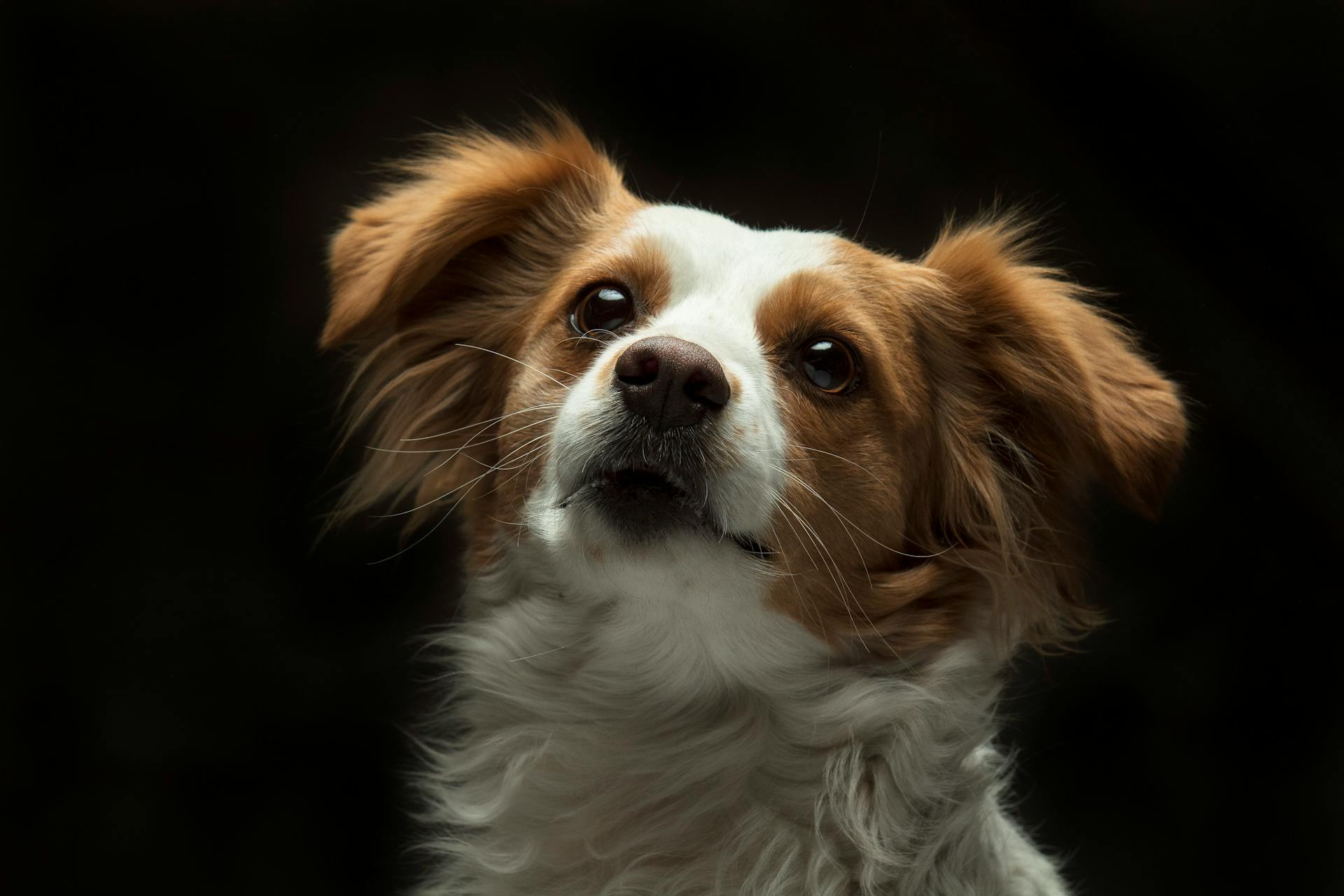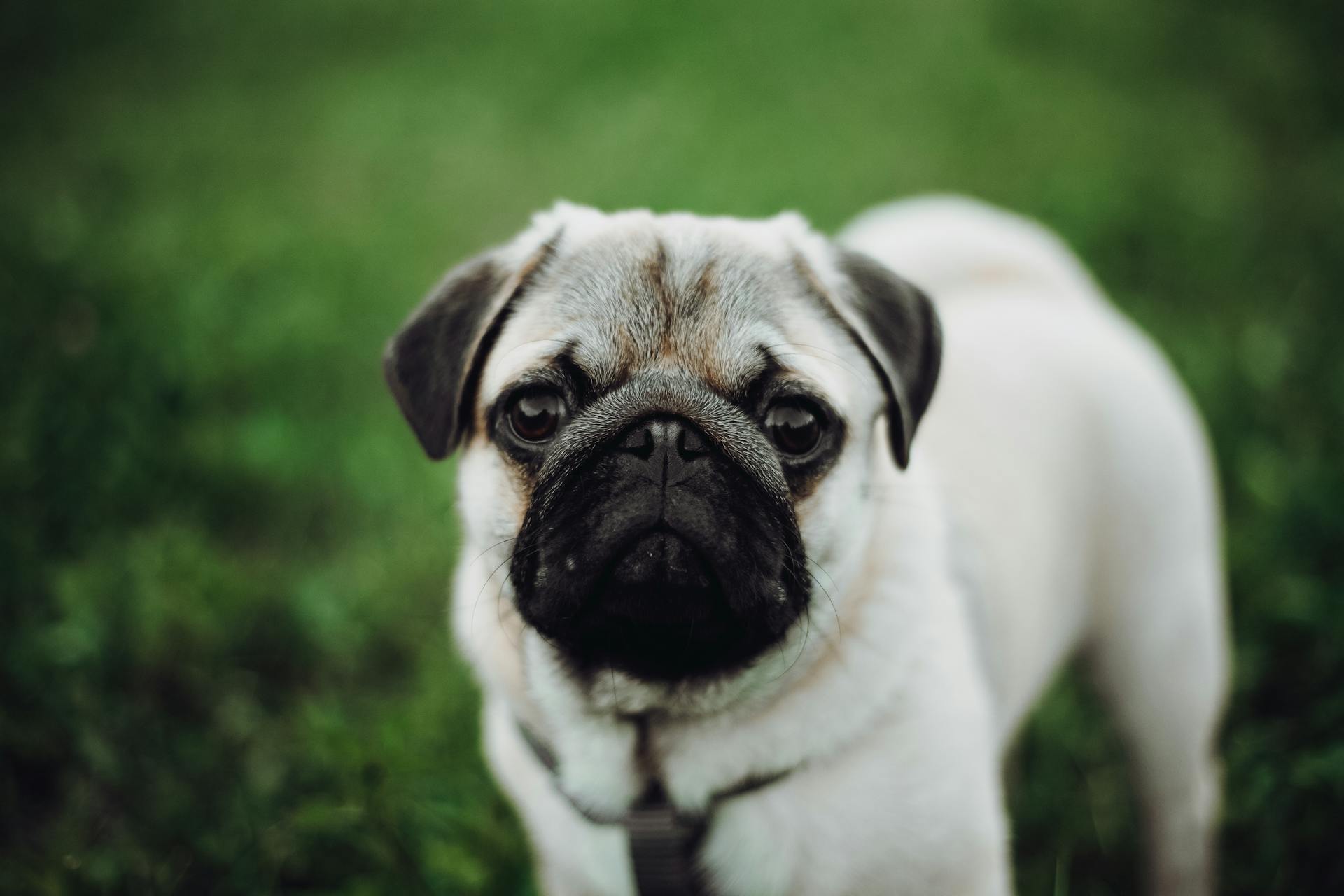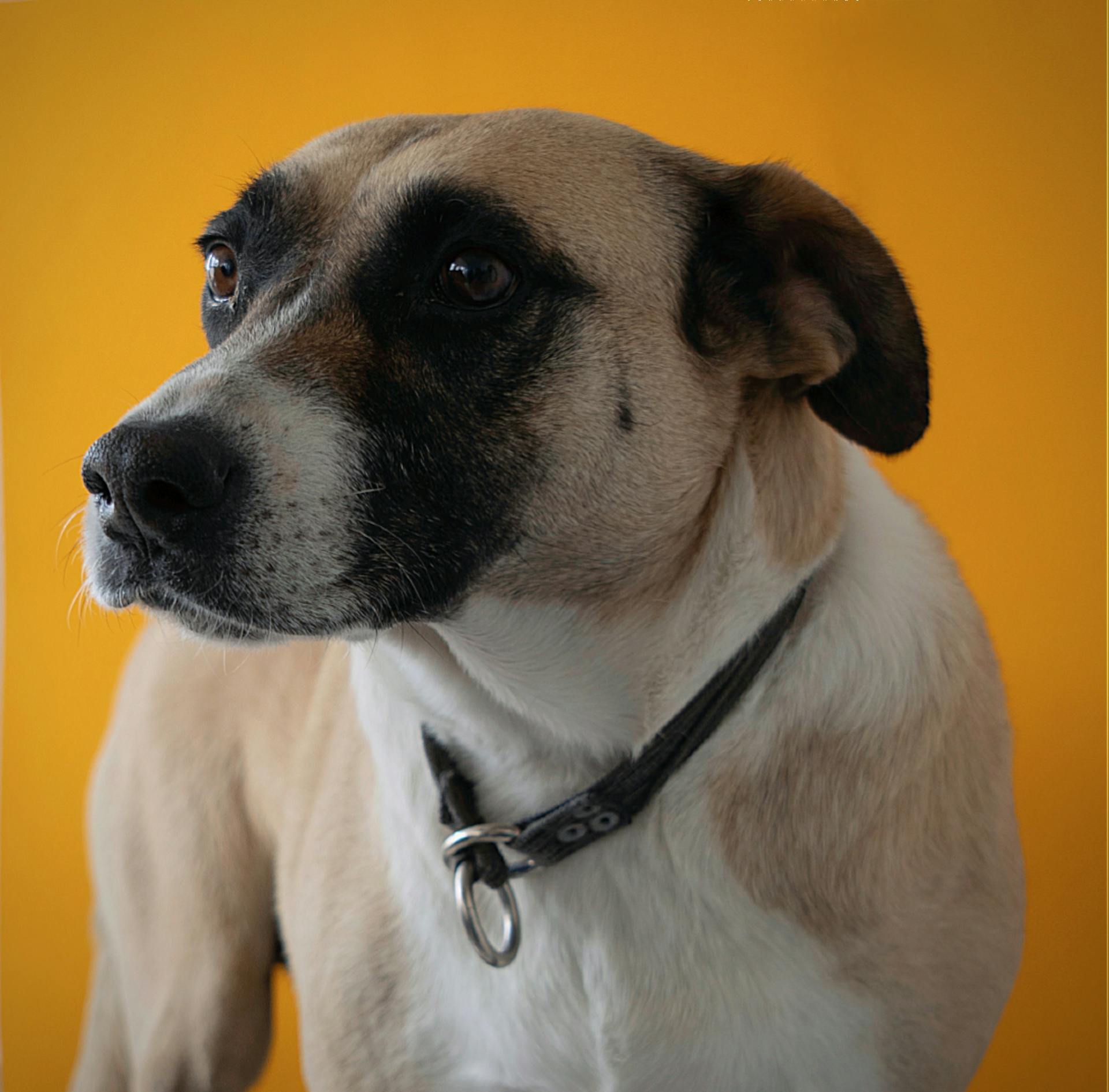
The Xoloitzcuintle, also known as the Mexican Hairless Dog, is a unique and ancient breed.
They come in three sizes: toy, miniature, and standard, with weights ranging from 10 to 40 pounds.
These dogs have a short, smooth coat that can be either hairless or coated.
Their lifespan can range from 12 to 18 years, depending on factors like diet and health.
The Xoloitzcuintle is an alert and watchful dog, always on the lookout for potential threats.
They are highly intelligent and trainable, but can be strong-willed at times.
This breed has a rich history, dating back over 3,000 years to the time of the Aztecs and Mayans.
Dog Care
The Xoloitzcuintli is a unique breed that requires attention to its health and well-being. They live a long life of 13-18 years, so it's essential to provide them with proper care.
Xolos come in three sizes: Toy, Miniature, and Standard. The Toy Xoloitzcuintli stands 10-14 inches tall, while the Miniature Xoloitzcuintli is 14-18 inches tall, and the Standard Xoloitzcuintli is 18-23 inches tall.
Consider reading: What Are the 14 Ancient Dog Breeds
A well-balanced dog food that meets the AAFCO nutritional guidelines is crucial for a Xoloitzcuintli's diet. Xolo puppies should eat puppy-specific food until they're 1 year old, when they can transition to adult food.
Overfeeding can lead to weight gain, which may cause joint or hip issues and other health conditions like diabetes. To avoid this, feed your Xolo high-quality dog food and measure out regular meals with a measuring cup or scale.
Xolos need daily exercise, so keep them on a leash when you're out on your run or walk, as they have a high prey drive and will run after smaller neighborhood animals.
Here are the different feeding schedules for Xoloitzcuintlis:
- Xolo puppies should eat at least three times a day on a regular feeding schedule.
- Start feeding them twice a day once they reach adulthood.
The amount of food your Xolo needs depends on their health, current weight, and lifestyle. Use your dog food packaging to find basic guidance on how much food your Xolo needs, and consult with your vet for a more accurate estimate.
Health
The Xoloitzcuintle is a very healthy breed that's prone to fewer health issues than many other domestic dogs.
The breed club recommends regular hip, cardiac, patella, and ophthalmology tests for your Xolo dog.
Hip and cardiac issues aren't super prevalent in the breed, which is great news for Xolo owners.
Patella problems, or kneecap issues, can occur in some Xolos, but it's not a common condition in the breed.
Ophthalmology tests are also recommended to check for eye problems, but common eye conditions aren't prevalent in Xolos.
You might enjoy: Bernese Mountain Dog Hip Dysplasia
Grooming and Appearance
The Xoloitzcuintle's grooming needs are relatively low maintenance, but they do require regular attention to their skin. The hairless variety needs frequent baths to remove oily buildup, followed by a moisturizing lotion rubbed all over the skin, and some may even need pet-safe sunscreen.
The hairless variety's skin is not soft or silky, but rather thick, tough, and protective, often described as a hide. During adolescence, acne and cradle cap are common issues that can be minimized with extra skincare.
The breed also requires regular toothbrushing and nail trimming, in addition to skin or coat care and bathing.
On a similar theme: Dogs Breeds That Start with B
Grooming Guide
The Xoloitzcuintli is a relatively low-maintenance breed when it comes to grooming.
Their skin needs regular attention, especially the hairless variety which requires frequent baths to remove oily buildup.
The coated variety, on the other hand, requires occasional baths and minimal brushing.
The hairless variety's skin is not soft or silky, but rather thick, tough, and protective.
In adolescence, acne and cradle cap are common, so extra skincare may be necessary to minimize these issues.
Regular toothbrushing and nail trimming are also essential for your Xolo's overall health and appearance.
The hairless variety may need a pet-safe sunscreen, especially if they'll be spending time outdoors.
Appearance
The Xoloitzcuintle's appearance is truly one of a kind. The breed ranges in size from about 10 to 55 pounds, with a height of 9 to 26 inches.
Their sleek body is similar in appearance to a Pharaoh Hound, with almond-shaped eyes and large bat-like ears. A long neck is also a distinctive feature of the breed.
The Xolo's dominant trait is its hairlessness, which originated as a spontaneous mutation thousands of years ago. This mutation is responsible for the breed's unique appearance.
The hairless variety is completely hairless on the body, with some dogs exhibiting a few short hairs on the top of the head, the toes, and the tip of the tail. Most hairless dogs are black or bluish-gray in color.
The coated variety, on the other hand, has a short, flat dense coat that represents the original form of the dog. The breed occurs naturally in two varieties: hairless and coated.
Here are the three designations of the breed's standardized sizes: SizeWeight RangeStandardAbout 10 to 35 poundsMiniatureAbout 15 to 25 poundsToyAbout 10 to 15 pounds
The Xolo's skin is often marked, splashed, or spotted, and can occur in a range of colors including black, grey, bronze, yellowish-blonde, blue, and red.
Check this out: Facts about Boxer Dog Breed
Behavior and Training
The Xoloitzcuintli is a smart and loyal breed that makes a great fit for new and experienced pet parents alike. They require about 20 minutes of exercise every day, which can be a long walk, jog, or hike.
Xolos need daily exercise and mental stimulation to prevent destructive behaviors. If they don't get enough physical and mental stimulation, they might get anxious or develop aberrant behaviors.
Here are some key characteristics to keep in mind when it comes to the Xolo's behavior and training:
Xolos are easy to train as long as you use positive reinforcement and consistent training methods. They respond well to rewards for good behavior and socialization is crucial to prevent them from becoming wary of new people and situations.
Characteristics of the Xolo
The Xoloitzcuintli, or Xolo for short, is a breed that's known for its energetic and agile nature. They love to be active and need daily walks and romps in the backyard to keep them happy and calm indoors.
Their intelligence and sensitivity make them a breed that requires gentle training and positive reinforcement. They're not difficult to train, but they do need consistent and patient guidance.
Here are some key characteristics of the Xolo, summarized in a table:
As you can see, the Xolo is a breed that's well-rounded and adaptable, making them a great fit for many families and living situations.
Behavior
The Xoloitzcuintli, or Xolo for short, is a breed that's known for its smarts and loyalty. They make great companions for new pet parents and experienced families alike.
Xolos need about 20 minutes of exercise every day to stay happy and healthy. This can be a long walk, a jog around the neighborhood, or a fun hike.
Daily exercise is crucial for Xolos, as it helps prevent destructive or aberrant behaviors from developing. It's also essential for their mental stimulation.
Xolos are naturally protective of their family and territory, and they'll often use their loud voice to alert you to passersby. But don't worry, they won't bark for no reason.
If you're not careful, your Xolo might get anxious about new visitors. To prevent this, it's essential to socialize your puppy from an early age and continue socialization throughout their life.
Here's a quick rundown of Xolo behavior:
Xolos are intelligent and sensitive dogs that respond best to positive reinforcement training. Consistency is key when training a Xolo, and they'll quickly pick up on cues if you use the right methods.
Pet Considerations
A Xoloitzcuintle is a happy companion as long as it gets daily exercise. They need to be on a leash during walks or runs to prevent them from chasing smaller animals.
Their high prey drive means they'll run after neighborhood pets, so keep a close eye on them. It's essential to socialize your Xoloitzcuintli puppy early and often to help them warm up to strangers.
Pet Care Considerations
When you have a Xoloitzcuintli, also known as a Xolo, you'll want to consider their exercise needs. A Xolo is happy being by your side, as long as they get daily exercise, that is.
Xolos love to run and walk, but they have a high prey drive, which means they'll chase smaller neighborhood animals if they're not on a leash. This is especially important in apartments or houses where smaller animals may be present.
You'll need to socialize your Xoloitzcuintli puppy early and often to help with their natural wariness of strangers. This will take time, but it's essential for their comfort and well-being.
For more insights, see: American Hairless Terrier vs Xolo
Xolos are generally healthy dogs, living a long life of 13–18 years. This is a significant commitment, and you should be prepared to care for your Xolo for many years.
Xolos come in three sizes: Toy, Miniature, and Standard. Here's a quick reference guide to help you remember:
Xolos have a distinctive look, with big ears, a long muzzle, and almond-shaped eyes. They're mostly naked, but some may have coarse hair on their head, feet, or tail.
Adopt/Buy
The Xoloitzcuintli is a rare breed, so you'll likely need to buy a puppy from a reputable breeder. They can be found through the Xoloitzcuintli Club of America's website, but be prepared for a waiting list.
Make sure to do your research and find a breeder who prioritizes the health and well-being of their dogs. The Xoloitzcuintli Club of America's directory is a great resource to start with.
The Xoloitzcuintli is a rare breed, so it's unlikely you'll find one in a rescue. If you do come across one, it's likely to be an adult that's already been cared for by its previous owner.
A different take: United Kennel Club American Bully
AKC
The American Kennel Club (AKC) has a special place in the history of the Xoloitzcuintli breed. A Mexican dog named "Mee Too" made breed history as the first AKC-registered Xolo in 1887.
The Xoloitzcuintli Club of America (XCA), the official parent club for the breed, was founded on October 26, 1986, to regain AKC recognition for the breed. This was a crucial step in the breed's journey to recognition.
Chinito Junior, bred and owned by Valetska Radtke of New York City, became the breed's only AKC champion to date, earning his title on October 19, 1940. This achievement is a testament to the breed's unique qualities.
The XCA has worked tirelessly to regain AKC recognition for the breed, and their efforts paid off in 2008 when AKC voted to readmit the breed to its Miscellaneous Class starting January 1, 2009. This was a major milestone for the breed.
Here's a list of key dates in the AKC's recognition of the Xoloitzcuintli breed:
- 1887: "Mee Too" becomes the first AKC-registered Xolo.
- 1940: Chinito Junior earns his AKC title.
- 1959: The Xolo is dropped from the AKC stud book.
- 1986: The Xoloitzcuintli Club of America (XCA) is founded.
- 2008: AKC votes to readmit the breed to its Miscellaneous Class.
- 2009: The breed is eligible to compete in AKC performance events.
- 2010: The breed is moved into the AKC Studbook.
- 2011: The breed is eligible to be shown in the AKC Non-Sporting group.
Frequently Asked Questions
Are Xoloitzcuintli native to Mexico?
Yes, the Xoloitzcuintli is native to Mexico, where it was finally recognized as a breed in its native land in 1956. This recognition also led to its official recognition worldwide.
What does Xoloitzcuintli mean in english?
The name Xoloitzcuintli translates to "dog of the gods" in English, derived from the Aztec words for "dog" and "god of fire and lightning". This name reflects the breed's sacred status in Aztec culture.
Sources
- https://www.petmd.com/dog/breeds/xoloitzcuintli
- https://www.thesprucepets.com/mexican-hairless-dog-breed-profile-4769495
- https://www.wikiwand.com/en/Xoloitzcuintle
- https://www.thekennelclub.org.uk/search/breeds-a-to-z/breeds/utility/xoloitzcuintle-mex-hairless-std-imp/
- https://www.akc.org/dog-breeds/xoloitzcuintli/
Featured Images: pexels.com


